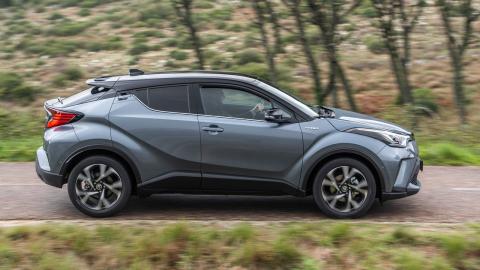
These are all the details we know so far about the new Toyota C-HR 2024, the new generation of the best-selling SUV from the Japanese firm.
The Toyota C-HR has been in production for almost seven years, and it’s time we started talking about a generational replacement. It will be the second generation of the model and it is scheduled to arrive in Europe at the end of this year. In this article we are going to review everything we know so far about the new Toyota C-HR 2024.
For the moment, Toyota and its engineers are focused on the development of the production model. While we were given a sneak peek at what it might look like in the Toyota C-HR Prologue revealed in December 2022, this concept vehicle has yet to evolve to resemble the model we’ll see in Toyota dealerships next year.
Toyota C-HR 2024: this is going to be the new best-selling SUV of the Japanese firm
However, some of its features will carry over to the street model, such as its angular silhouette, the shape of the side windows, the roof spoiler, the wheel arches or the hood with a low front section, as well as the shape of the taillights.
There will also be homegrown stylistic elements, such as the headlights, which will have a somewhat less prototypical shape, there will be conventional rear-view mirrors, flush door handles and smaller wheels.
Toyota affirms that the new C-HR 2024 will be “more spacious and practical” than the current model, which debuted in 2016 and was renewed in 2019. This will be possible thanks to the fact that the second generation of the Japanese SUV will be based on the platform The company’s TNGA-C, which it shares with other models such as the Toyota Prius.
On a mechanical level, the new Toyota C-HR 2024 will be available with a hybrid powertrain and another plug-in hybrid. At the moment, no details have been disclosed about its technical characteristics and/or specifications, although it may be related to the Toyota Corolla engines, at least in the conventional hybrid versions.
In China, the first generation of the C-HR is marketed as an all-electric variant. It is not entirely confirmed that the new model will arrive in an electric version in Europe, but this possibility is not ruled out either, at least for now.
The new generation will be produced in Turkey, like its predecessor, but the battery packs will be assembled in Europe from imported cells. Its debut is scheduled to take place later this year, with the start of commercialization probably as early as 2024.
















